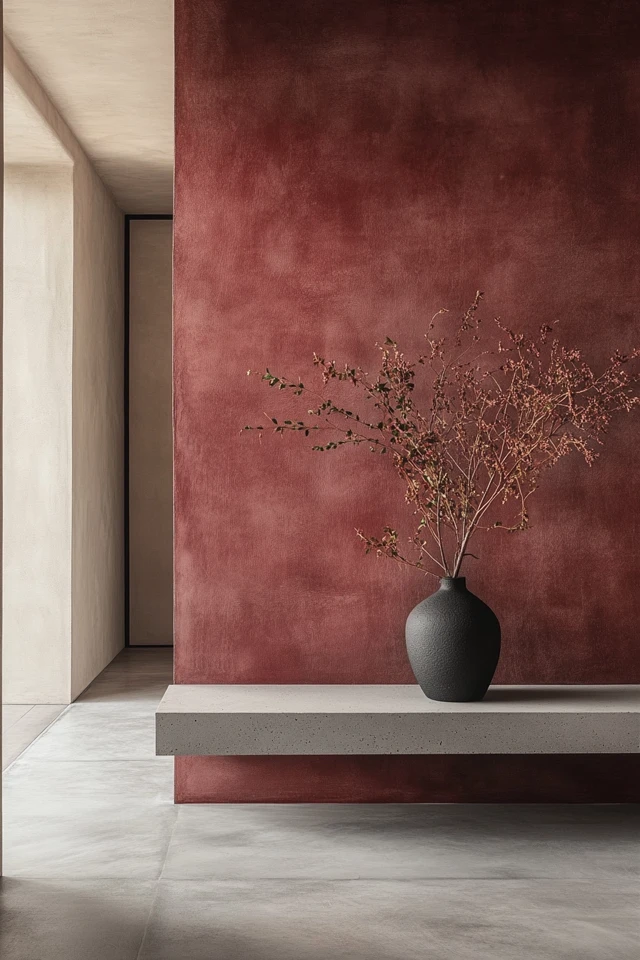Color is a vital part of minimalist interiors, setting the tone for your space while maintaining the simplicity and calm that defines the style. Minimalist design relies on neutral and subdued palettes to create a serene and cohesive environment, but that doesn’t mean you’re limited to just black and white. The right color palette can elevate your home, bringing warmth, texture, and personality without compromising on minimalism’s clean and uncluttered aesthetic.
When I first redesigned my living room with a minimalist approach, I stuck to whites and grays but soon realized that subtle earthy tones and soft textures could make the space feel much more inviting. By layering neutral shades with hints of olive green and warm taupe, I created a palette that felt both soothing and personal.
In this guide, we’ll explore the best color palettes for minimalist interiors, offering a mix of classic and modern options to help you achieve a clean, sophisticated look tailored to your style.
Why Color Matters in Minimalist Interiors
Key Features of Minimalist Color Palettes
- Simplicity: Limited color schemes keep the space cohesive and uncluttered.
- Neutral Tones: Subdued hues create a calming, timeless feel.
- Flexibility: Minimalist palettes work as a versatile backdrop for functional design and personal accents.
- Depth through Texture: Minimalist interiors often use varying textures to add interest to monochromatic spaces.
1. Classic Monochrome: Black, White, and Gray
The timeless combination of black, white, and gray defines classic minimalist interiors.
Why It Works
- High contrast adds visual interest without clutter.
- Clean, sharp lines are emphasized, making the space feel organized and crisp.
How to Use It
- White walls and ceilings keep the space bright and open.
- Use black for accents like furniture legs, light fixtures, or window frames.
- Introduce gray through soft furnishings like rugs or upholstery for a touch of warmth.
Example:
A white sofa with black throw pillows and a gray area rug creates a perfectly balanced, modern look.
2. Warm Earth Tones: Beige, Taupe, and Terracotta
Earthy tones bring warmth and an organic feel to minimalist spaces.
Why It Works
- Adds a sense of coziness and connection to nature.
- Creates depth and variety while staying neutral and subdued.
How to Use It
- Beige or taupe walls provide a soft, warm backdrop.
- Incorporate terracotta through decor items like vases, pillows, or artwork.
- Use wood furniture or flooring to tie the palette together.
Example:
Pair a taupe sofa with a terracotta planter and a beige rug to create a minimalist yet inviting living room.
3. Soft Pastels: Blush, Sage, and Pale Blue
For a minimalist look with a hint of personality, soft pastels provide a subtle pop of color.
Why It Works
- Adds a touch of playfulness without overwhelming the space.
- Works beautifully in bedrooms or spaces where serenity is key.
How to Use It
- Use blush or sage as accent colors for throw pillows, bedding, or art.
- Paint a single wall in a pale pastel shade for a light, airy feel.
- Pair pastels with white or light gray for a fresh, modern look.
Example:
A sage green duvet on a white bed frame, paired with a pale blush throw, creates a calming minimalist bedroom.
Picture Gallery

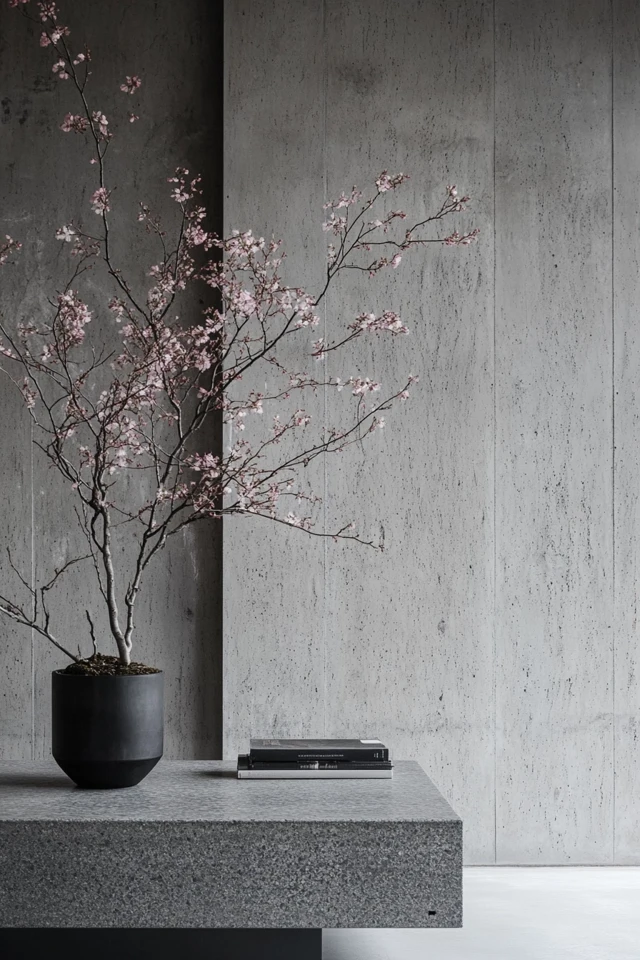
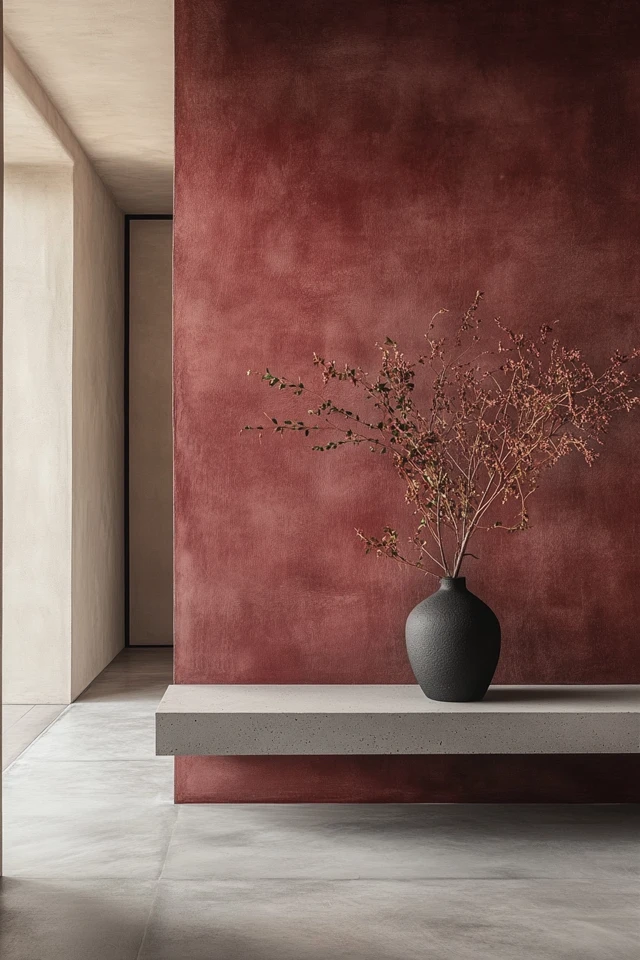
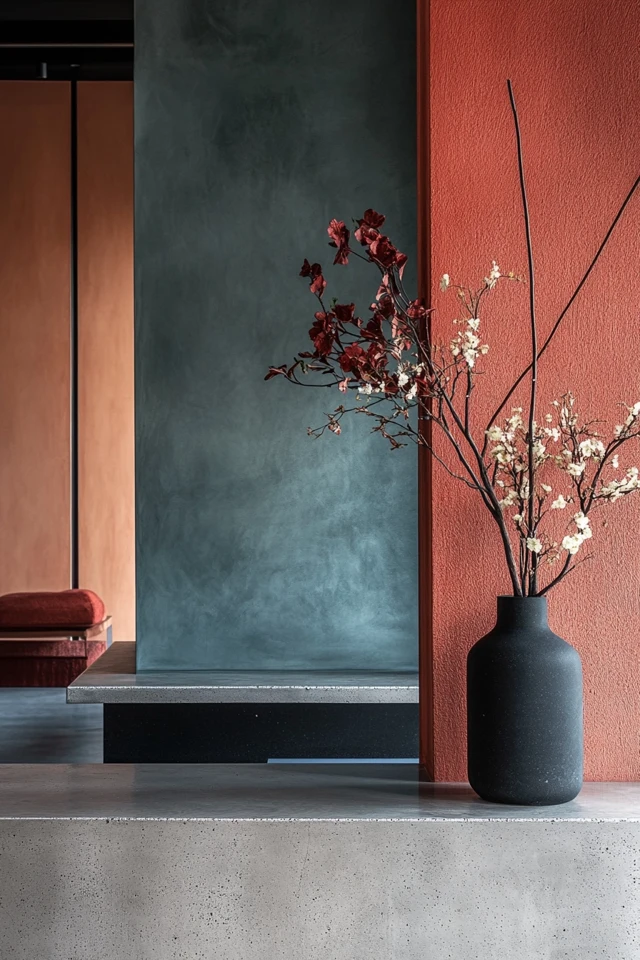

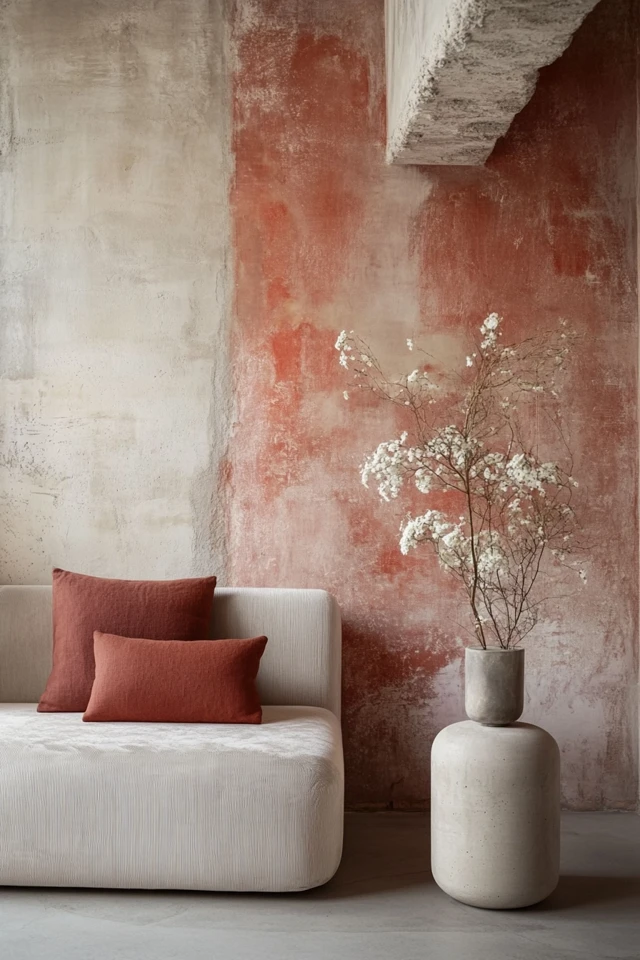
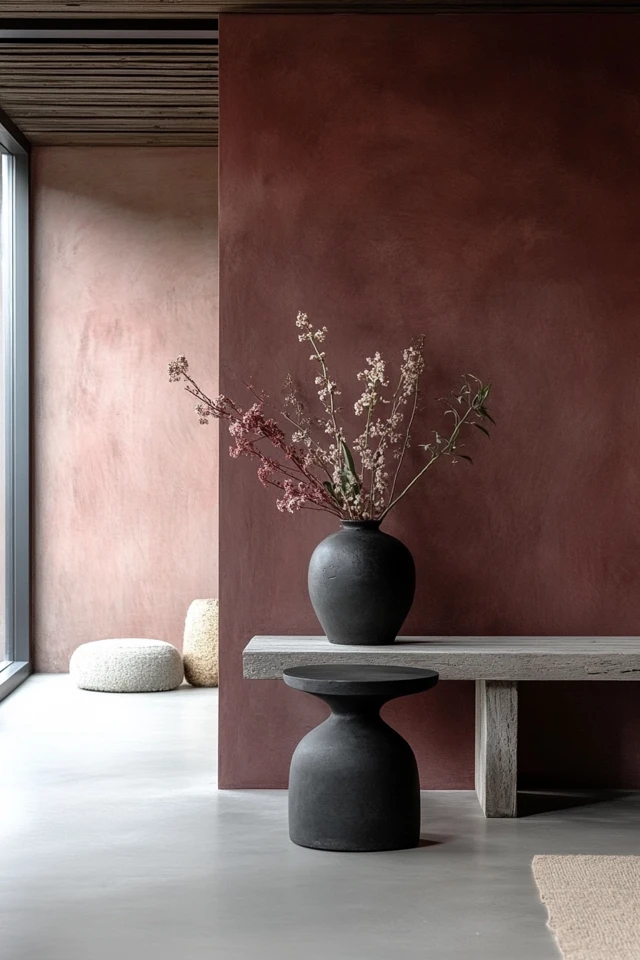
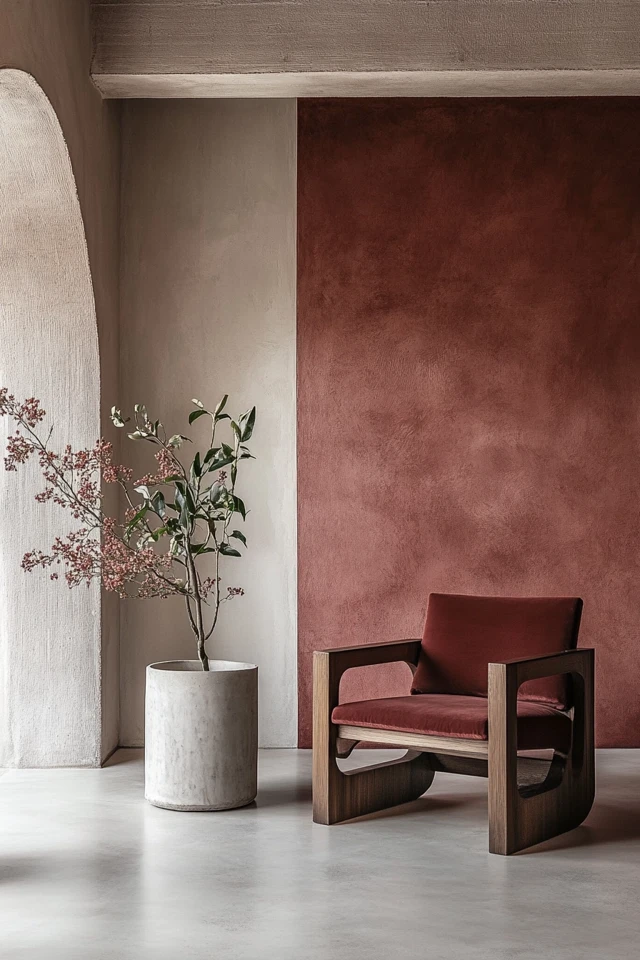
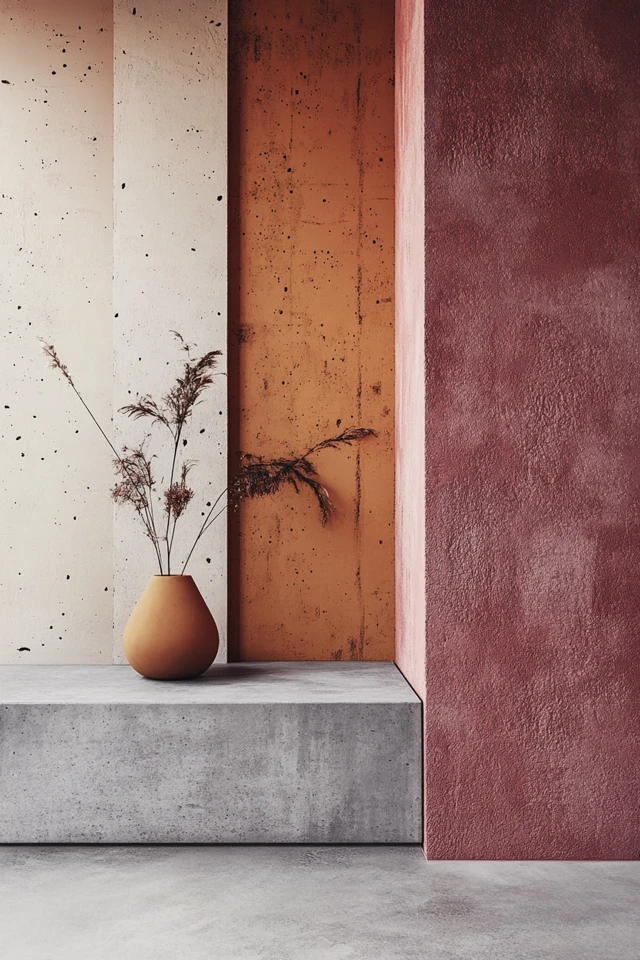
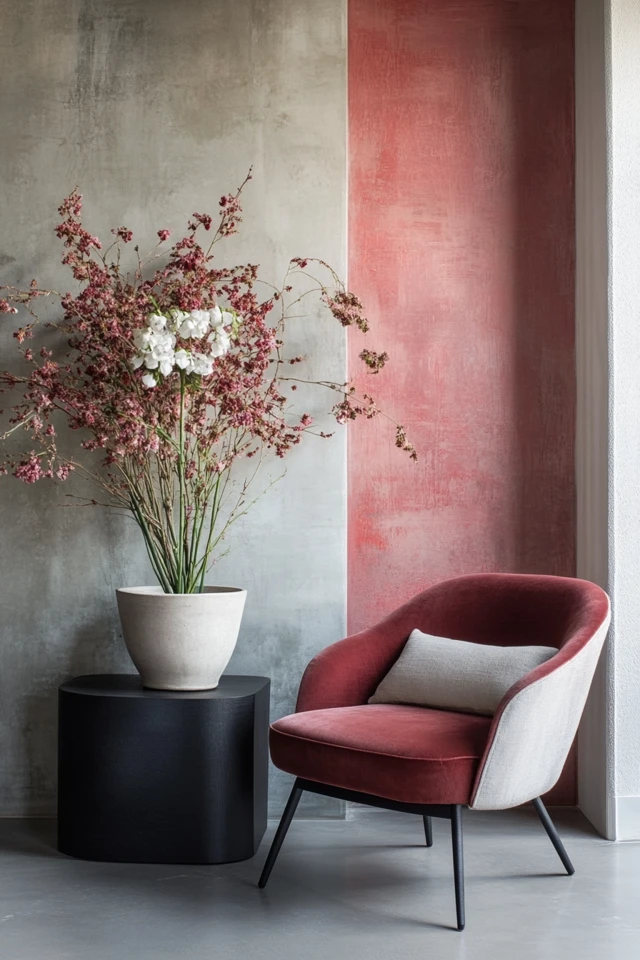
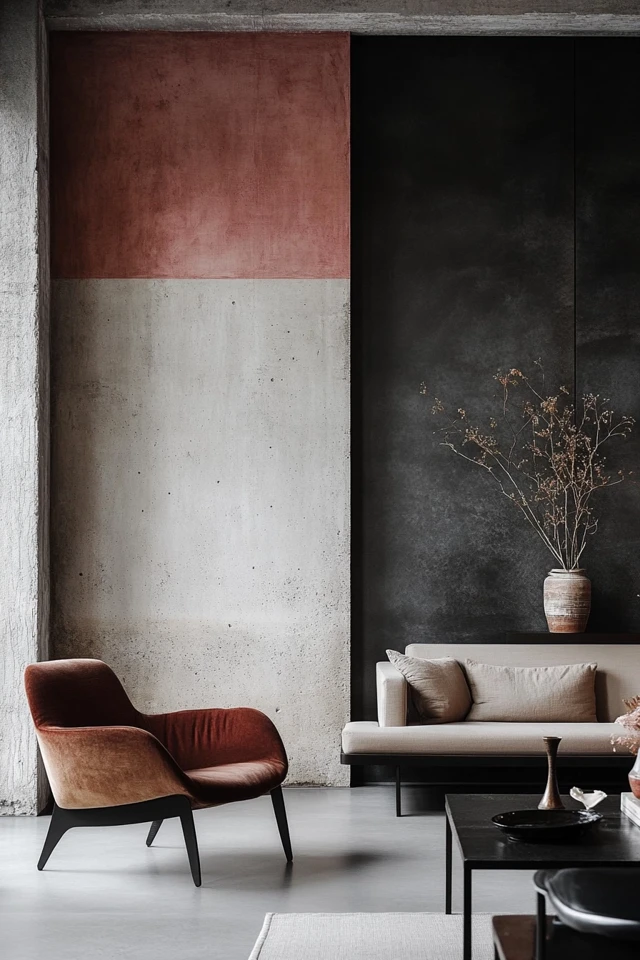

4. Muted Greens and Naturals: Olive, Eucalyptus, and Sand
Inspired by nature, muted greens paired with sandy tones bring tranquility to minimalist interiors.
Why It Works
- Connects the space to nature, enhancing calm and relaxation.
- Works seamlessly with wood and other organic materials.
How to Use It
- Paint walls in a soft olive or eucalyptus tone for an earthy feel.
- Use sand-colored rugs, curtains, or throw pillows for warmth.
- Incorporate greenery with potted plants like ferns or pothos.
Example:
A eucalyptus green accent wall paired with a sand-toned sofa and natural wood furniture creates a grounded, peaceful space.
5. Warm Neutrals with Accents: White, Cream, and Rust
Adding warm accents to a neutral palette can give minimalist interiors a touch of sophistication and character.
Why It Works
- The neutral base keeps the design simple, while rust or amber accents add interest.
- A versatile palette that works well across living rooms, dining areas, and bedrooms.
How to Use It
- Stick to cream walls and white furniture for a bright foundation.
- Incorporate rust or amber tones in small decor elements like cushions, vases, or artwork.
- Layer with warm textures like wool throws or jute rugs.
Example:
A white sofa with a rust-colored throw and cream curtains creates a minimalist look with warmth and depth.
6. Modern Monochrome: Charcoal, White, and Steel Blue
For a bold yet minimalist look, combine deep charcoals with cool steel blues.
Why It Works
- Charcoal adds a sense of drama without overwhelming the space.
- Steel blue provides a cool, calming contrast that’s perfect for modern interiors.
How to Use It
- Use charcoal for accent walls or larger furniture pieces like sofas.
- Introduce steel blue through decor items like cushions, rugs, or art.
- Balance the darker tones with white walls or flooring to keep the room light.
Example:
A charcoal sectional sofa with steel blue throw pillows and a white coffee table creates a minimalist, contemporary vibe.
7. Greige Elegance: Gray-Beige with White and Black Accents
Greige—an elegant blend of gray and beige—is a go-to for minimalist interiors.
Why It Works
- Combines the warmth of beige with the sophistication of gray.
- Serves as a versatile neutral that complements a range of decor styles.
How to Use It
- Use greige as the main wall color for a soft, subtle background.
- Pair it with white trim, black accents, and natural wood tones for balance.
- Incorporate greige textiles, like throw blankets or curtains, for a cohesive look.
Example:
A greige sofa paired with a white area rug and black-framed artwork creates a polished, minimalist living room.
8. Wood and White: Scandinavian Simplicity
The Scandinavian-inspired combination of white and light wood is a staple in minimalist design.
Why It Works
- Creates a bright, open space that feels both modern and timeless.
- Emphasizes natural materials for a warm, organic vibe.
How to Use It
- Pair white walls with light oak or birch furniture.
- Add depth with subtle accents in muted gray or soft green.
- Use woven textiles, like wool or linen, to add texture.
Example:
A white dining table with light oak chairs and a woven jute rug embodies Scandinavian minimalism.
How to Choose the Right Palette
1. Consider Your Space
- Smaller rooms benefit from lighter colors, like white or pale gray, to create the illusion of space.
- Larger spaces can handle deeper tones, like charcoal or olive green.
2. Think About Mood
- Use warm tones for a cozy, inviting feel.
- Opt for cool tones to create a fresh, calming atmosphere.
3. Add Depth with Texture
- Stick to a simple palette but vary the textures—mix soft textiles, natural woods, and sleek metals for interest.
Conclusion
The right color palette is the foundation of any minimalist interior, balancing simplicity with sophistication. Whether you prefer classic black and white, warm earth tones, or soft pastels, these palettes provide the perfect canvas for creating a serene, uncluttered space.
For me, experimenting with color palettes has been one of the most rewarding parts of designing minimalist interiors. The subtle shifts in tone and texture make all the difference in creating a space that feels uniquely yours.
So, take your time, explore these palettes, and find the one that resonates most with your style and space. With the right colors, you can create a minimalist home that’s as beautiful as it is tranquil.
FAQ
Can I use bold colors in a minimalist interior?
Yes, but sparingly. Use bold colors as accents in small decor items or artwork to keep the space balanced.
What’s the most versatile minimalist color palette?
A neutral palette of white, beige, and gray is the most versatile, providing a timeless foundation that complements any decor.
How do I add warmth to a minimalist color palette?
Incorporate warm neutrals like taupe or rust, and use natural materials like wood, leather, or woven textiles.
Are dark colors suitable for minimalist interiors?
Yes! Dark tones like charcoal or deep green can work beautifully as accents or focal points, especially when paired with light neutrals.
Where can I find inspiration for minimalist color palettes?
Look to Scandinavian interiors, nature-inspired designs, or online resources like Pinterest and interior design blogs for inspiration.

